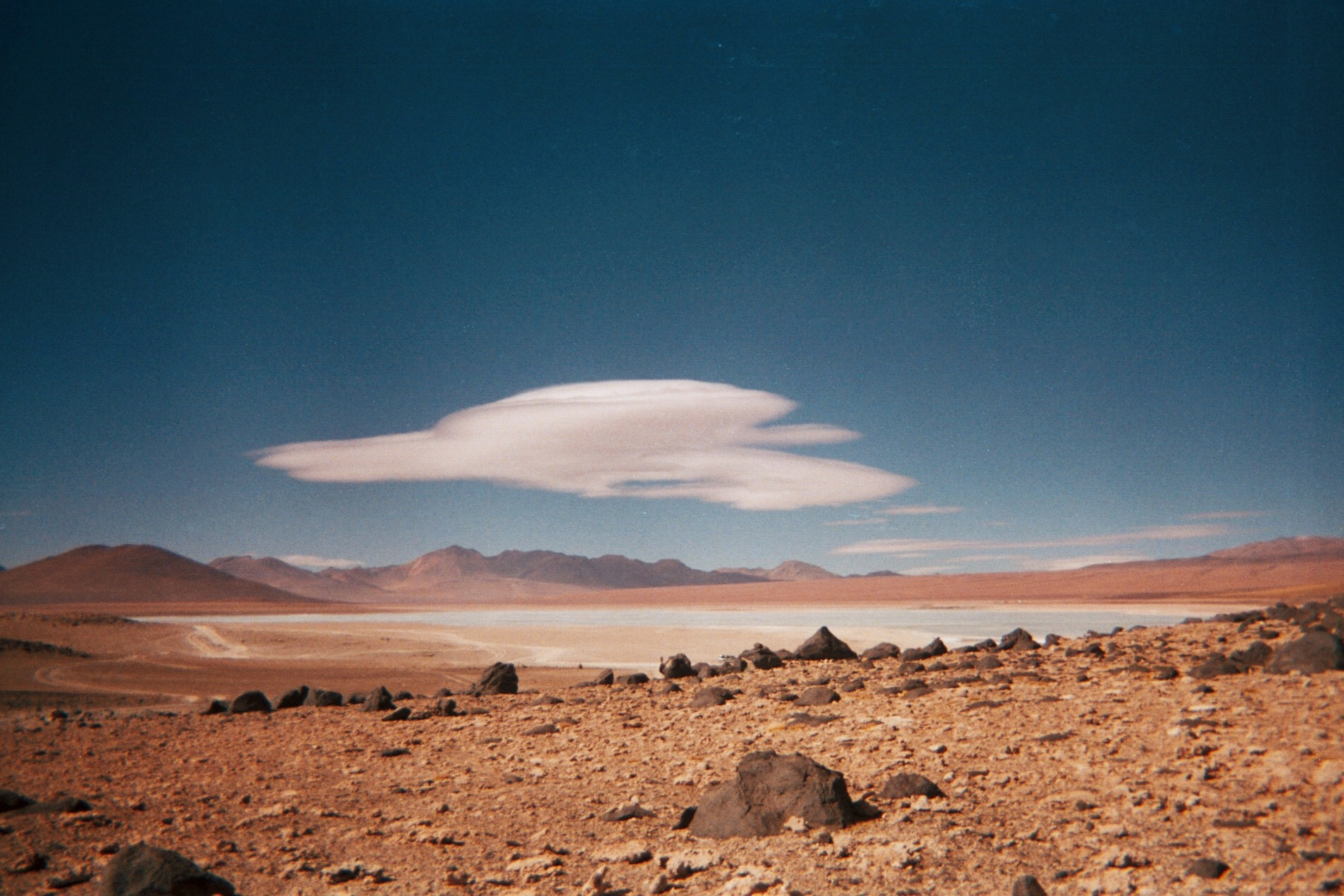28/05/23
Dreaming of solo backpacking around the world but feeling overwhelmed by the planning process? Believe me, I know how scary it can be. It took me a solid 6 months to plan my own journey. So to save you some hassle, here's a comprehensive step-by-step guide to help you prepare an unforgettable long-term backpacking trip.
If you’d rather read this guide in a snazzy-looking eBook format and access it on the go, you can download the free eBook version . You’ll get instant access to other free tools, such as the backpacking trip planner and my Notion list of 60+ trip planning resources.
20 STEPS TO PLAN A LONG-TERM SOLO BACKPACKING TRIP
Dreaming of solo backpacking around the world but feeling overwhelmed by the planning process? Believe me, I know how scary it can be. It took me a solid 6 months to plan my own journey. So to save you some hassle, here's a comprehensive step-by-step guide to help you prepare an unforgettable long-term backpacking trip.
If you’d rather read this guide in a snazzy-looking eBook format and access it on the go, you can download the free eBook version . You’ll get instant access to other free tools, such as the backpacking trip planner and my Notion list of 60+ trip planning resources.

When should I start planning for my long-term backpacking trip?
Long-term travel planning takes time and effort. With so many things to consider, it's important to start preparing as early as possible, especially if you plan on being away for an extended period of time.
It's a good idea to begin planning as soon as you start thinking about making a backpacking trip. Start by researching potential destinations to get the process started. How long you'll need to prepare for your trip also depends on the following:
- Your finances: If you need to save a significant amount of money for your backpacking trip and have no savings, you'll need time to accumulate enough funds before leaving.
- Your flat and job situation: Do you need to find a tenant, move your belongings, or cancel your lease? Do you need to quit your job? These tasks can take time, so evaluate your situation and plan accordingly.
- Visas, passport, and vaccines: Some vaccines have a 30-day delay between shots. Visas can take a while to process, and passports can take over a month to renew or issue.
- Your destination: If you're travelling to the other side of the continent, book your flight tickets at least four months in advance. This means you'll need to plan your trip well before that
It all depends on your unique situation. A strict minimum of three months is necessary to plan a backpacking trip to allow for visa applications, vaccinations, and cheaper flight bookings.
💡To give you a ballpark figure, here's how long it took me to plan for my 6-month backpacking trip in South America:
︎In March 2018, I realised I needed to do a backpacking trip. The decision was apparent as I was suffering from burnout. It felt like the right thing to do. My whole life suddenly became about this future trip. I poured all my energy into it, as it helped me picture a better future.
︎I had an intensive work schedule from March to August, so I couldn't plan anything during that time. I was leisurely browsing destinations and decided to backpack in South America. I told my boss I wanted to end my contract at the end of the year. This helped me enter the planning phase, as the decision to leave was now concrete, and I couldn't get out of it.
︎I started planning my trip in September, about six months before leaving. I still had a job at the time, so that's why I needed ample time to prepare for this backpacking trip.

Step 1) Decide WHY you want to make a backpacking trip
People usually don't travel for multiple months to discover new places for no reason. Why do you actually want to spend time away from home, and travel adventurously?
For me, it was to heal from burnout, improve my surfing, build self-confidence, and take a break from my exhausting life. It also felt like the right thing to do, like it was my destiny, and something I absolutely had to do.
When you know why you want to travel solo for an extended period, your choices become meaningful, and your journey becomes a life-changing decision.
Step 2) Think about how long you'd like to travel
You don't need to know exactly how many months (or years) you want to travel. But think about the minimum time you'd like to spend away from home. Do you want to do a 3-month, 6-month or 1-year backpacking trip?
Remember that you could extend or shorten your trip while travelling. But you'll need to rely on your savings if you're not planning to have a monthly income while travelling. Giving yourself a minimum time will help you properly budget and save for your trip.
If you'll have a monthly income, this becomes easier, as you can freely extend your time since you won't run out of money.
Step 3) Research destinations to get inspired
If you're unsure which countries or regions to explore for backpacking, head to backpacking forums on Facebook and speak to people who have made a similar trip. You can also read backpacking blogs and travel magazines to get an idea of which destinations may interest you.
A good way to start is by picking a continent first. You can decide which countries to visit later, but it's best to favour continents where you can easily travel from one place to another, preferably by bus or boat.
When researching destinations, also pay attention to administrative requirements such as visas and mandatory vaccines.
Need some ideas? Check out my 6-month South America backpacking trip itinerary ︎︎︎
The brainstorming phase ☁️
You've heard about your friends' epic journeys, from road-tripping in Australia to trekking the Andes in Peru. You're yearning to live the same exhilarating experiences, discover the world and take a break from the daily hustle of work. You want to feel free!
In other words, you're entering the brainstorming phase: should I go on a backpacking trip? Where, when, how? So many questions may arise, and you may feel overwhelmed by the planning process and the admin' hassle of preparing for a long-term adventure.
Dashing out a clear travel plan can help ease potential travel-related anxiety and get excited about leaving.

Step 4) Make a trip “retro planning”: your pre-departure checklist
A pre-departure checklist can give a snapshot of everything you need to do before leaving and when you need to do it. It can help you avoid overlooking important details and determine your ideal departure date. You can use my trip retro planning template, which is the table I used to plan my trip. Edit and adapt it to fit your specific situation.
How it works:
- Add the months from when you start planning your trip to your estimated departure date on the top line. There should be four columns per month (one column=one week). If you need six months to prepare for your trip and want to leave in January, the first month would be August.
- List all your tasks in the left column. Follow the steps below to learn about specific travel planning tasks.
- Determine when you need to complete each task. Add a "To Do" box in the corresponding week.
- When you're done with a task, change the box to "Done."
You can edit your task list and add more tasks as you prepare for your trip and research destinations.
Open the retro-planning template ︎︎︎
Step 5) Determine what to do regarding your flat and job situation
First things first: what will you do with your flat while travelling long-term? Do you need to move out, find a tenant, or sublease it?
What about your job? Will you keep working while backpacking, go freelance, or rely on your savings?
Think about these issues early on, and then define the steps needed to regulate your situation regarding your job, taxes, and flat. Input these tasks into your trip planner.
Step 6) Start budgeting for your trip
Estimating your trip budget can help you determine if you can afford to travel solo long-term. It allows you to re-evaluate your itinerary, adjust the length of your trip, and know how much you need to save before taking off.
To start, figure out the cost of flights. Then, determine expenses such as vaccine and visa fees, fixed monthly expenses, accommodation, food, transportation, and backpacking gear.
If you need a travel budget template, use the budget worksheet provided in my backpacking trip planner to estimate your total budget. For more tips on budgeting for your long-term adventure, read "How to Plan a Budget-Friendly Backpacking Trip."
Finally, update your trip budget with the actual costs as you complete each task from your travel planner.
Step 7) Book your one-way flight
Use websites like Skyscanner to compare flight prices. Try booking your flight on a Tuesday, as this is when rates are updated. Always search for flights in incognito mode and clear your cookies to benefit from lower prices.
For long-haul flights where you need to cross the globe, book your tickets at least four months in advance.
You only need to book a return flight if you already know when you want (or need) to return home. Booking a one-way flight can give you a profound sense of freedom because you can extend or shorten your trip and travel without a specific return date.
After booking your flight, update your budget worksheet with the actual cost.
Step 8) Get the necessary visas & vaccine shots
On your travel planning to-do list, make sure to mark your calendar with the dates for when you need to take your required vaccine shots. You can find the necessary vaccines for South America in my backpacking trip planner.
Step 9) Pick a travel insurance
When selecting travel insurance for solo travellers, it's important to consider several factors to ensure comprehensive coverage. Here are some tips to help you choose the right travel insurance:
- Coverage for medical expenses: Look for a policy that provides ample coverage for emergency medical expenses, including hospitalisation, medical treatments, and evacuation if necessary. Ensure the coverage extends to the destinations you plan to visit.
- Trip cancellation and interruption: Opt for a policy that reimburses you for non-refundable trip costs in case you need to cancel or cut short your trip due to unexpected circumstances such as illness, injury, or emergencies.
- Personal belongings and baggage: Choose a policy that offers coverage for lost, stolen, or damaged belongings, including luggage, electronics, and important documents like passports. Check the policy limits and consider any valuable items you may be carrying.
- Emergency assistance and 24/7 support: Look for a policy that provides round-the-clock emergency assistance services. This can include medical advice, emergency cash transfers, and coordination for medical evacuations if needed.
- Personal liability coverage: Consider a policy that includes personal liability coverage to protect you in case you cause accidental injury or damage to someone else's property during your trip.
- Duration and coverage limits: Ensure the policy covers the entire duration of your trip and has adequate coverage limits that align with your needs and the costs associated with your destination.
- Reviews and reputation: Research the insurance provider and read reviews from other travellers to gauge their reputation for customer service, claims processing, and overall satisfaction.
- Compare multiple quotes: Get quotes from different insurance providers and compare the coverage, exclusions, deductibles and prices to find the best balance for your specific travel requirements.
My recommendation: if you’re from the US, SafetyWing’s Nomad Insurance provides flexible plans to fit your needs. If you’re based in Europe, Chapka is a leader in the industry and offers affordable plans whatever your needs.
Step 10) Start learning the local language
Give yourself time to learn the language. It'll make your trip ten times better.
Step 11) Make your packing list
First, determine what you need to bring and what you need to buy. Then, factor these costs into your travel budget spreadsheet.
You can find a backpacking essentials checklist in the backpacking trip planner. If you're traveling to South America, read "What to Pack for South America Backpacking" and get a full 6-month backpacking trip packing list.
Step 12) Buy the missing gear
This is when stuff starts getting really exciting. Pick your perfect backpack, and buy quality gear.
Step 13) Get a Revolut credit card (or a similar option)
If your current bank charges you for oversee withdrawals and transactions, consider getting an international online bank to avoid hefty currency exchange fees. Let your bank know for how long you'll be travelling and where.
Step 14) Change your mobile plan and unlock your phone
Similarly, see what international options your mobile plan offers. Unlock your phone to use a local sim card and get 4G while travelling abroad.
Step 15) Book necessary doctor appointments
Make your routine medical appointments before leaving (dentist, gynaecologist...).
Step 16) Cancel unnecessary monthly subscriptions
Are you subscribed to anything that you won't need during your trip? Cancel them before leaving to save a few pennies!
Step 17) Plan your arrival
You're getting SO close! Determine the first few destinations you'd like to visit. I only planned my first month in Costa Rica before leaving. I pre-booked hostels, secured a volunteering opportunity, and then embraced the spontaneity. As I went along, I adapted my itinerary each month based on the amazing people I met and the opportunities that came my way.
I highly recommend not over-planning every single step in advance. Being flexible allows for unexpected discoveries and incredible experiences that may not fit a predetermined schedule.
However, it's always helpful to have a wish list in mind—a general idea of the destinations you want to visit and the activities you'd like to engage in. To make things easier, you'll find a wish list template in the backpacking trip planner.
Step 18) Prepare an online drive with important documents and back up your phone and laptop
Keeping your documents safe while travelling long-term is essential. Prepare an online drive with scanned copies of your important travel documents. Make this drive accessible offline so you can access it on the go.
Backup your phone before leaving, and schedule monthly online backups to make sure you don't lose those precious photo memories.
Step 19) Prepare music playlists
You're about to embark on lengthy flights and bus rides, so prep some playlists with your favourite sounds to make the journey easier. If you need inspiration, I’ve curated 7 music playlist for solo backpackers on long bus rides.
Step 20) Last step! Book a onewayfly ticket for proof of return
The excitement is booming! You’re days away from taking off. Your backpack is ready, and you can’t hold still. But hold up, there’s still one essential administrative thing to do before checking in for your flight and starting your epic adventure: having a proof of return.
If you don't have a return flight, you must show proof of return in some countries. Onewayfly allows you to do that for 25€, providing you with a temporary, legit flight reservation that's valid for 48 hours. So book your ticket about 2 days before your departure date to be safe.
When I checked in for my flight to Costa Rica, the airport staff asked for my return ticket, so I was happy I had this "fake" return flight with me!
So to sum it up, here’s how to plan a long-term backpacking trip in 20 steps:
- Decide why you want to make a backpacking trip
- Think about how long you’d like to travel for
- Start researching potential destinations
- Make a pre-departure checklist or to-do list
- Determine what to do with your job and flat while you’re gone
- Start budgeting for your trip
- Book a one-way flight
- Get the necessary visas and vaccines
- Pick a travel insurance
- Start learning the local language
- Make a packing list
- Buy missing gear
- Get a Revolut credit card/similar option
- Change your mobile plan and unlock your phone for international sim cards
- Book necessary medical appointments before leaving
- Cancel unnecessary monthly subscriptions
- Plan your arrival
- Prepare an online drive with important documents
- Prepare music playlists
- Book a proof of return
FAQ: How to plan a long-term solo backpacking trip ✦
How do I plan a long-term solo backpacking trip?
To plan a solo backpacking trip, start by brainstorming destinations, evaluating your job and flat situation, creating a budget, researching accommodations and transportation options, buying backpacking gear, and planning your arrival itinerary. Research safety, cultural norms, and visa requirements for each country you’re planning to visit. You can use a backpacking trip planner or a pre-departure travel checklist to help you know exactly what to do and when before leaving.
What’s the best time of the year to backpack South America?
It depends on where you start and how long you plan on travelling for. If you start your backpacking trip in the North, for example in Colombia, and travel down to Brazil, you’ll experience different seasons. Large countries like Peru and Argentina also experience different seasons in the same month!
I started my trip in January in Costa Rica, and ended it in July in Brazil. This timeline was perfect for me as I was travelling mostly during the shoulder season and didn’t experience heavy rainfall.
Due to the continent's vast size and diverse climates, it's important to consider different weather patterns. Here's a general breakdown:
- Patagonia (Southern Argentina and Chile): The peak season is during the southern hemisphere's summer months from December to February when the weather is milder. But keep in mind that this is also the busiest and most expensive time. Spring (September to November) and autumn (March to May) offer fewer crowds and beautiful landscapes.
- Andean Countries (Peru, Bolivia, Ecuador): I visited these countries in March and April. But most people visit during the dry season in the highlands, which runs from May to September. These months offer more stable weather and clearer skies. Most hiking routes will be open during this time of the year.
- Brazil: The peak tourist season in Brazil is during the country's summer months from December to February. This is a great time to visit coastal regions and enjoy vibrant festivals such as Carnival. I visited Brazil’s coastal region in July and the weather was perfect: comfortable heat, clear skies and little crowds.
- Colombia, Venezuela, and Ecuador: These countries near the equator have relatively stable climates year-round. While they may experience some rainfall, backpacking is possible throughout the year.
Long-term travel budget tips: How can I save money while backpacking?
To save money while backpacking solo, consider volunteering and staying in budget accommodations like hostels or guesthouses, opt for affordable transportation options, and cook your meals instead of dining out. Be mindful of your spending, take advantage of free activities and attractions, and consider travelling during off-peak seasons to secure better deals. For a full guide, read How to plan a budget-friendly backpacking trip︎︎︎
What should I pack for a solo backpacking trip?
Pack lightweight and versatile clothing suitable for the destination's climate, durable footwear, a well-fitted backpack, essential toiletries, a first aid kit, a travel adapter, and necessary travel documents. Bring a portable charger, a lock for your backpack, a reusable water bottle, and any specific gear relevant to your planned activities. Check out my backpacking gear checklist to make your life easier!
How can a backpacking trip planner help me?
A backpacking trip planner will help you organise and streamline the planning process. With it, you can create a travel itinerary, estimate and manage a travel budget, and compile important travel information in one place. It simplifies trip preparation and ensures you don't overlook essential details.
What are some recommended solo backpacking destinations for long-term travel?
There are plenty of unique destinations for solo backpacking. Popular options include Southeast Asia (Thailand, Vietnam, Indonesia), Europe (Spain, Italy), South America (Peru, Costa Rica, Colombia), and Oceania (Australia, New Zealand). Choose a destination that aligns with your interests, budget, travel preferences and safety considerations. Need inspiration? Visit my 6-month South America backpackign trip itinerary. You’ll find a handy map with over 40 stops, from Costa Rica to Brazil.
Which travel insurance should solo travellers take?
Here are some popular options known for their comprehensive coverage and positive customer reviews:
- World Nomads: World Nomads is a well-known travel insurance that caters specifically to backpackers and long-term travellers. They offer flexible policies, including coverage for adventure activities, emergency medical expenses, trip cancellation and baggage protection. It’s the insurance I had for my trip, and they reimbursed all my valuables that got stolen in Ecuador (cash, fraudulent transactions, laptop, camera).
- SafetyWing: SafetyWing has affordable and comprehensive travel medical insurance plans designed for digital nomads and long-term travellers. Their policies cover medical expenses, emergency medical evacuation, travel delays, and personal liability.
- True Traveller: True Traveller specialises in long-term travel insurance and offers flexible policies for backpackers. They provide coverage for medical expenses, emergency repatriation, trip cancellation, and a wide range of adventure activities.
- Chapka Assurance (France): Chapka (CAP Aventure) is a reliable French insurance company specialising in comprehensive travel insurance solutions for adventurous backpackers.
- Genki: an affordable travel & health insurance for digital nomads and adventurous travellers. Works like a monthly subscription that you can cancel whenever needed.
How can I ensure a memorable solo backpacking experience?
To make your solo backpacking experience memorable, embrace spontaneity, interact with locals and fellow travellers, step out of your comfort zone, and immerse yourself in the local culture. Be open to new experiences, and keep a journal or take photos to capture special moments.
Solo travel safety: How can I stay safe as a solo backpacker?
Staying safe as a solo backpacker involves researching and understanding your destination's local customs and laws, avoiding risky areas or situations, staying connected with your family and friends back home, and being aware of your surroundings. Trust your gut, follow basic safety precautions, and consider joining group tours or activities to feel safer.


